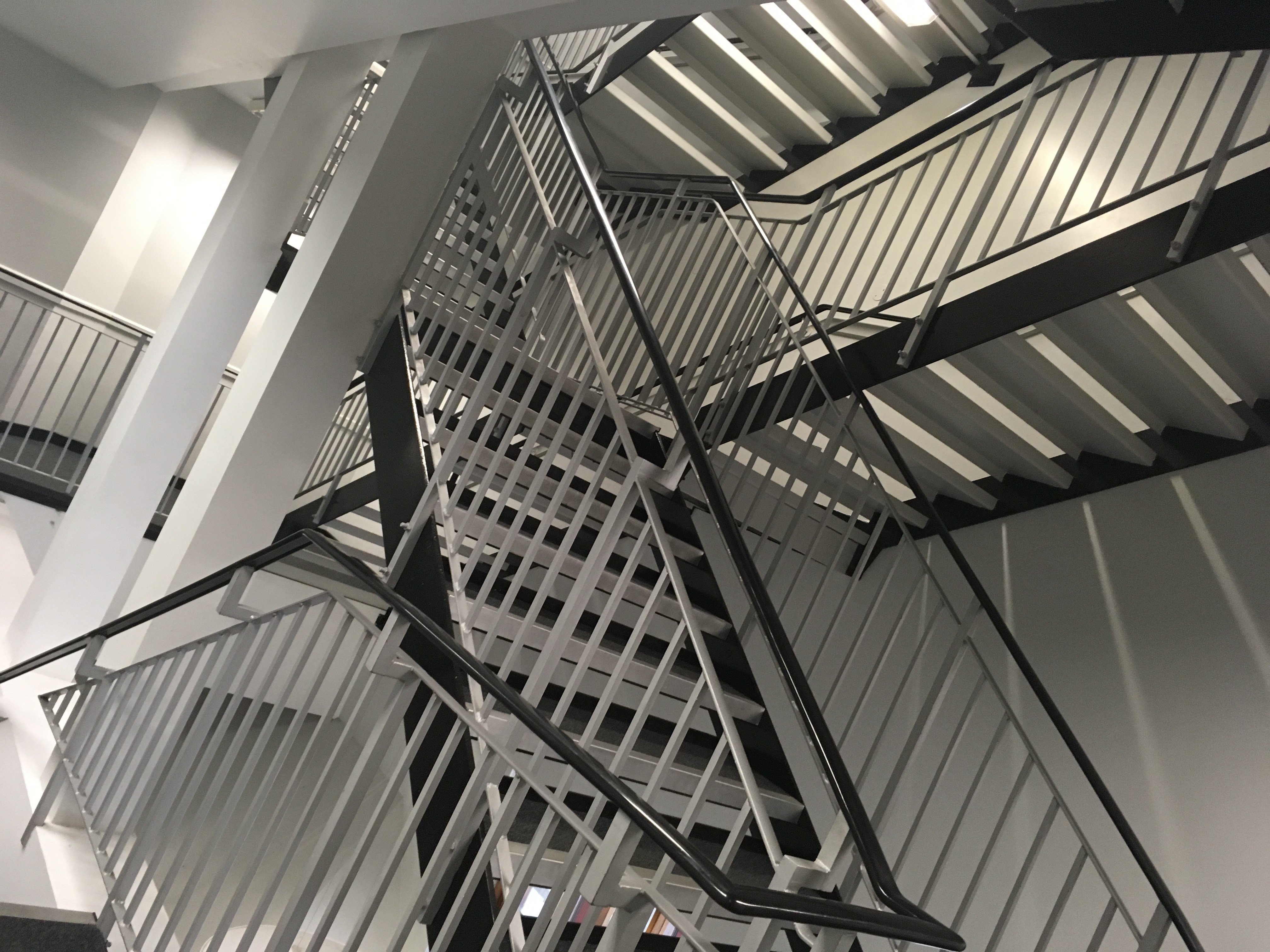On 24th July, City hosted the M25 Learning Technology Group for the first time since 2011 and welcomed over 35 delegates from around London and the South East. The focus of the session was on designing better learning environments and we looked at both physical and virtual spaces.
The #M25LTG kicks off with an introduction from @julievoce and an icebreaker activity to introduce each other in groups. #altc #Turn&Learn pic.twitter.com/pmF1t3ObJz
— City Uni LEaD (@CityUniLEaD) July 24, 2017
Elizabeth Charles (Birkbeck, University of London) talked about the redesign of a library space on the ground and mezzanine floors to create more group working spaces. Spaces included a variety of different spaces/furniture and included bookable “pods” which are enclosed areas with table, chairs and screen. Lessons learnt include:
- Provide more chairs – these are now stacked up and available for students to use.
- Let students know where usable power sockets are, especially if they are within the furniture.
- Students will squeeze into spaces if necessary e.g. (booths for 4 people have had 10 students sat in them).
- Coloured floor tiles can be used to direct students to other areas.
- Students don’t like low tables
- Students might prefer an alternative layout – Elizabeth noted that the students had rearranged the furniture on the mezzanine area and after several weeks they decided to keep it in the new layout.
Paul Joyce (Kingston and St George’s, University of London) then wowed us with the Paramedic simulation suite down at their shared Tooting campus. The simulation suite consists of five key areas:
- Purpose built skills lab – with equipment set up all the time and lots of floor space for mannequins, students can book the lab to practice their skills.
- Central teaching area – used for debrief after simulations, for exams and peer observation/assessment whilst running scenarios.
- Two simulated ambulances – built by the company who fits out the London ambulances, these are exact copies and available 24 hours a day.
- Domicile rooms – three rooms available (kitchen, bathroom and bedroom) to simulate common situations paramedics may encounter. Built in hatches to that others can easily see what is happening in the room.
- Immersion room – a white room which uses Xbox technology (audio plus video) to simulate different environments, e.g. scene of a fire or a hospital ward.
Skills lab, Simulation Suite and an Immersion Room… noise and sound… the full scenario @JHunterCity #m25ltg #altc ^SV pic.twitter.com/OHn8V4vGGh
— City Uni LEaD (@CityUniLEaD) July 24, 2017
Closing the first half of the event, Chris Fryer (LSE) showcased the new Moodle theme developed for LSE by Synergy Learning. The brief was simple – replicate the new LSE website, which would make Moodle look more stylish and up to date. Key features include course images, which can be added by academics to brand their course, and a new student dashboard showing last course accessed and, where enabled, completion tracking. Chris emphasised the importance of user acceptance testing, which was very time consuming as it required navigating through every screen. He also noted that having an existing web design brief made it easier to generate requirements for the web developers.
Next for all your @moodle people @lselti Chris Fryer on their Moodle Theme #M25LTG ^SV Inspired @CityMoodle to try this? #taketheLEaD ? pic.twitter.com/ekdmgwGGyR
— City Uni LEaD (@CityUniLEaD) July 24, 2017
For the second half of the event, it was over to City’s Educational Technology Team to showcase a number of the City learning spaces as part of a Twitter Walk. Sheila Egan and Dom Pates opened the session with an introduction to City’s Learning Spaces and an overview of the activity. Participants were taken off in small groups to see and discuss both informal learning spaces, such as the Tait Cafe and main entrance, and formal spaces, such as the teaching rooms and PC labs in Drysdale Lower Ground. Whilst on the tour, they were encouraged to tweet their thoughts about the rooms:
Group 5 discussing how a feeling of open space can contribute to informal group work #Citytwalk #T1 #M25LTG pic.twitter.com/GTSFVn6LDe
— City Uni LEaD (@CityUniLEaD) July 24, 2017
https://twitter.com/cj_fryer/status/889500255980584964
Can charge devices. There are sockets in the sofas #Citytwalk pic.twitter.com/Q1hVlYjqRU
— Lynn Danzig (@lynndanzig) July 24, 2017
Fun with pop-up PCs #Citytwalk #M25LTG #T3 pic.twitter.com/zH8CJJSjqw
— City Uni LEaD (@CityUniLEaD) July 24, 2017
Horseshoe lecture theatre #M25LTG #citytwalk pic.twitter.com/6rU9wKBZzZ
— Dr Julie Voce (@julievoce) July 24, 2017
Finishing off the day, we discussed some of the spaces we had seen and polled people to find out what they liked about the spaces they had seen and would most like to see in their institutions. Flexible furniture topped the list, with people wanting ‘wheels on all things’, e.g. wheeled chairs and tables, pop-up computers and swivel chairs in lecture theatres.
At the end of yesterday's #M25LTG #Citytwalk, we asked which #learningspaces ideas ppl would like to see in their institutions. They said… pic.twitter.com/8KwVcDT2Rm
— City Uni LEaD (@CityUniLEaD) July 25, 2017
Thank you to everyone who participated in the event. The next M25-LT meeting will take place in November – venue and topic to be confirmed!
For further Tweets about the event, have a look at this collection of tweets on Storify set up by Santanu Vasant or check out the #m25ltg and #CityTwalk hashtags on Twitter.

